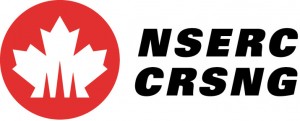 The Natural Sciences and Engineering Research Council of Canada (NSERC) has awarded Anthony Carlsen a 5-year discovery grant to support his program of research. The reshttps://neuromotor.ca/people/earch proposal, entitled “Examining the nature of distributed neural contributions to motor preparation and initiation,” aims to determine the brain regions involved in preparing for upcoming actions. The grant, which funds the NeuroMotor Behaviour Lab at the University of Ottawa will primarily be used to support graduate student and research assistants and to ensure adequate supplies to allow the research to be carried out in a timely manner. This research has the potential to impact many lives, particularly in those with motor disorders that slow down reactions.
The Natural Sciences and Engineering Research Council of Canada (NSERC) has awarded Anthony Carlsen a 5-year discovery grant to support his program of research. The reshttps://neuromotor.ca/people/earch proposal, entitled “Examining the nature of distributed neural contributions to motor preparation and initiation,” aims to determine the brain regions involved in preparing for upcoming actions. The grant, which funds the NeuroMotor Behaviour Lab at the University of Ottawa will primarily be used to support graduate student and research assistants and to ensure adequate supplies to allow the research to be carried out in a timely manner. This research has the potential to impact many lives, particularly in those with motor disorders that slow down reactions.
Research Abstract:
It has long been recognized that certain types of movements are prepared in advance to allow task requirements to be met. For example, movements that require a fast reaction time (RT), or those performed in the absence of feedback can be completed successfully and accurately if the goal of the action is known in advance. Although humans commonly perform these types of movements with ease, much is unknown regarding how these actions are planned and carried out by the central nervous system. It has been suggested that these movements are governed by “motor programs” that can specify the details of the motor plan to be carried out. Although motor programs have often been thought of as a metaphor to describe preparation for movement, several more literal models have been proposed describing how motor programs may be represented in the brain. Cortical cell assemblies, in the form of strengthened connections between motor cortical neurons, have been proposed as a mechanism for motor program representation. While these contemporary models suggest that motor programs are cortically mediated and stored, here we propose to investigate the hypothesis that motor actions are represented in both cortical and subcortical brain structures.



